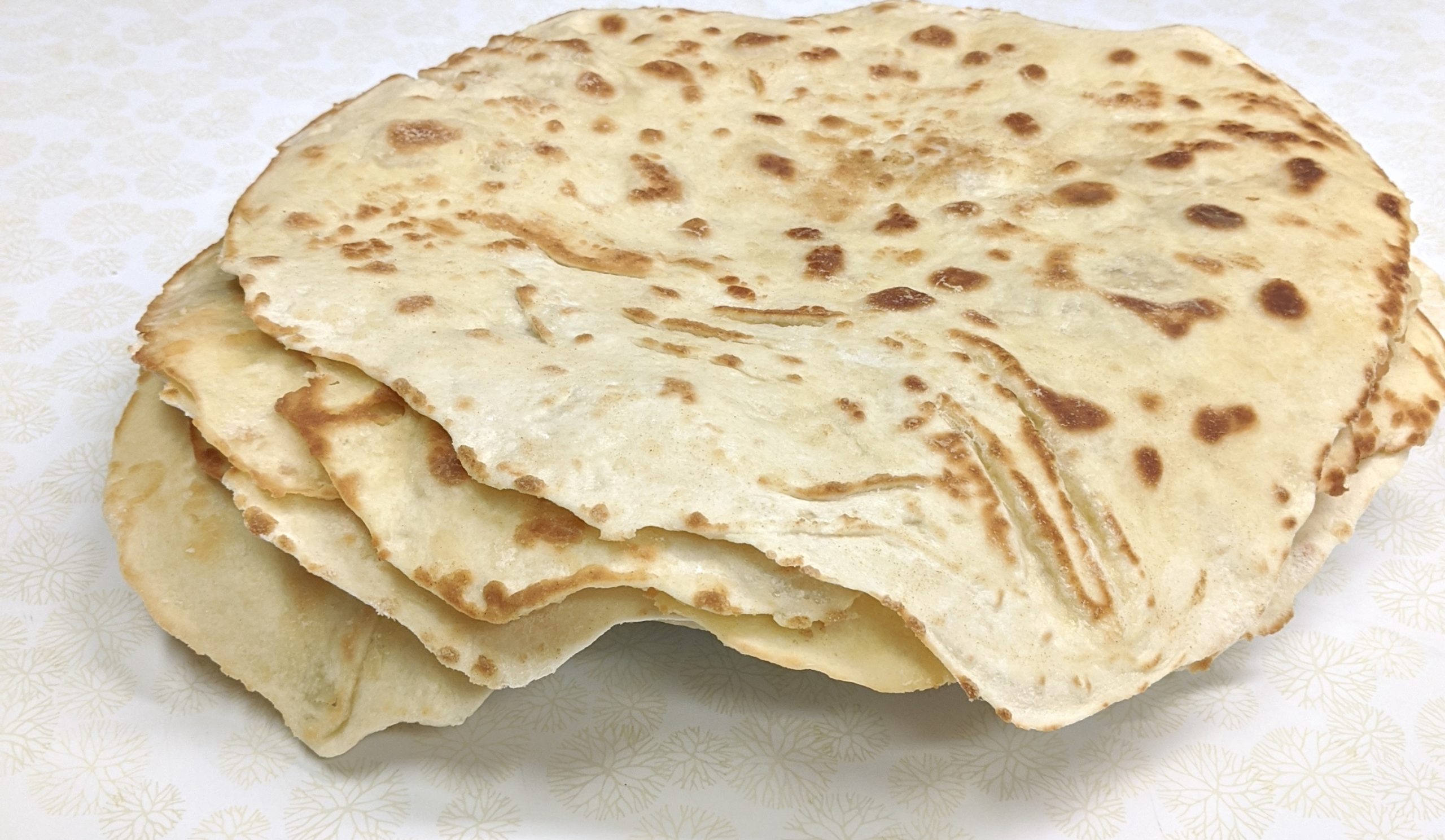Israel– Laffa and Labneh

The Thanksgiving holiday put our culinary travels on a bit of a break, but last week we hopped back on board and found ourselves celebrating the bounty of Israel and the Arab Levant. With the close proximity to the celebration of Chanukah, one might think that we would capitalize on the opportunity to serve up some good latkes, but we didn’t. We talked about it, debated over it, and said we would, then said we wouldn’t.
Latkes are a great tradition of Israeli food. For those of you who might not have had the pleasure to try these delicious treats, they are kind of like a “souped up” thinner version of an American hash brown. Because of that, and the complexity of frying up enough latkes for everyone, we opted to give it a pass.
Menu:
- Falafel
- Israeli Salad
- Chicken Shawarma
- Laffa
- Sauces:
Labneh
Baba Ganoush
Tahini
Schug
You might be thinking, “You guys are frying up something else?” Well, we have the oil so we might as well use it! Plus it has a little bit of a zing to it from the Nashville Hots we served for our “private” lunch two days before Thanksgiving.
Overall, the falafel was good, it had some flaws, but some of that comes down to using a pot on a burner and not a regulated fryer. We had one batch go in the fryer that had begun to moisten from the batter and flour. This caused them to basically disintegrate in the oil, leaving little spiky balls of what looked like uncooked falafel mix. After troubleshooting, we were able to get the oil temp dialed in and the mix at the right consistency for frying. Like I said, they were good but not great.
The shawarma turned out excellent– moist, flavorful, and the right amount of spice. Pair that with the subtle heat and herbaceous flavor of the falafel and right there you have a dish that beats any other lunch we can get around here. To top this all off, we had our variety of sauces and the laffa bread as well.
Of the sauces, I made the labneh, a strained yogurt with lemon juice, drizzled with olive oil and za’atar. This thickened, spreadable yogurt sauce added an acidic bite to the dish. It helped cut the fattiness of the falafel, cooled the chicken, and helped with the introduction of the more mild flavors of the baba ganoush, lettuce, and tomatoes. One nice thing about this addition to the menu is that I was able to use sumac harvested from my yard for the za’atar.
The laffa was one of the items that just completed the whole meal; and I’m not saying this just because I made it. Laffa is a flat bread that is traditionally cooked in taboon oven. I do not have access to one of those, so I improvised and used a flat top griddle. In the recipe, found below, it states that the same dough can be used to make pita as well, all you have to do is roll the dough out thicker. Though pita is perfectly acceptable with this meal, laffa is the more traditional. The bread has a texture much like what you’d expect a pita to have, but it does not have the air pocket that is quintessential to a pita.
The texture of the final product is closed, with a buttery mouthfeel to it. This is surprising, being that there is no butter in the dish, only olive oil which generally does not impart the same quality. Even though the bread feels on the dense side and does not have a “fluffy” feel to it, it does provide a great medium for sopping up sauces. The tightness of the dough also allows it to be used as a bun, holding up to the moisture from the meats and sauces you want to pile on.
I pretty much followed the recipe to a tee, except I went about 1.5 times on the salt. I chose to do this consciously, in order to balance it well with the seasonings of the other menu items. I knew the falafel and shawarma were being prepared on the lighter side of seasoning, thus I wanted the bread to help pull out the flavors in the pairing. One thing to note about the recipe, I found that the first proofing did not fully double in size on me. I was worried about this but, due to time constraints, I opted to move forward with portioning and the second proof. The second time around the dough did double on me and dramatically changed in consistency and feel.
What was once a spongy, moist ball of dough became a velvety smooth ball ready for rolling. I don’t entirely know how to put that perfect dough feel into words, but this dough had it. Almost like the feeling of soft velour on your fingertips. Rolled out, rubbed with olive oil, and thrown on a hot flat top, they cooked up in no time and were delicious straight off the griddle and just as much the next day. This is an easy dough I will use again and I recommend that you try it as well.